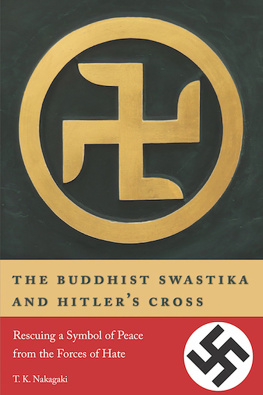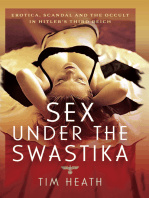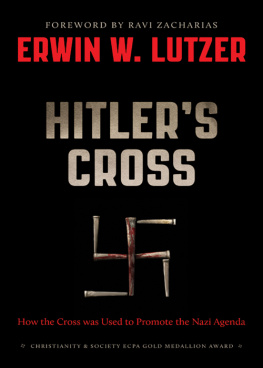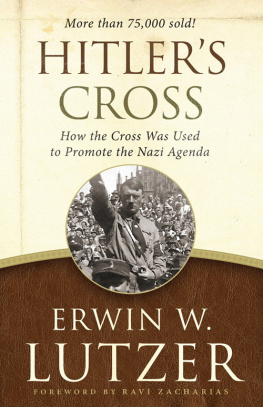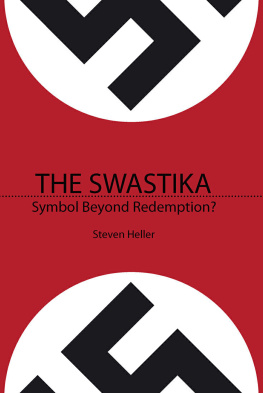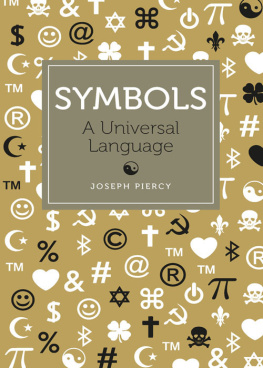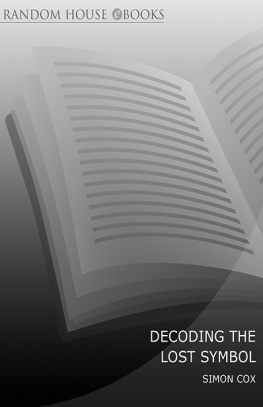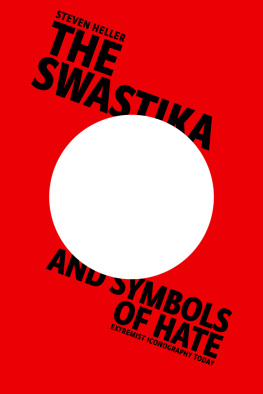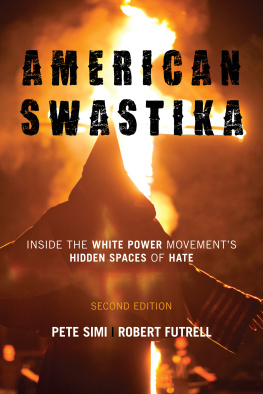THE BUDDHIST SWASTIKA AND HITLERS CROSS
The Reverend Dr. T.K. Nakagaki renders a great service by rescuing the swastika, or manji, a benign 1,400-year-old Buddhist symbol in Japan, from its hateful use by Adolf Hitler and his fascist Nazi thugs. It is must reading for all who care about the healing impact of the worlds great religions.
Dr. George Packard, Dean Emeritus, Johns Hopkins School of Advanced International Studies
The Reverend Dr. T.K. Nakagaki has long been a prominent leader in the interfaith movement in New York City, and this book is a further expression of his belief that mutual understanding can lead to enhanced harmony and peace in this world. In a brave gesture of cross-cultural significance, The Buddhist Swastika and Hitlers Cross offers us a detailed explanation of the positive history and meaning that this profound symbol has had for millions of people over the millennia.
Rande Brown, LCSW, former Executive Director of the Tricycle Foundation, publisher of Tricycle: The Buddhist Review
Reverend Toshikazu Kenjitsu Nakagaki has shown intellectual courage and integrity in selecting for his book the controversial symbol of the swastika, stigmatized in the West for its association with ideas of racism and hatred and revered in the East for ages as representing a sacred spirituality. He has done a commendable job in presenting his extensive study and research opening the door for the inquisitive to the significance of this many-faceted icon and its implications for peace and reconciliation in todays complex world. The book is undoubtedly impressive and deserves wider global attention and readership.
Ambassador Anwarul K. Chowdhury, Under-Secretary-General of the United Nations (20022007)
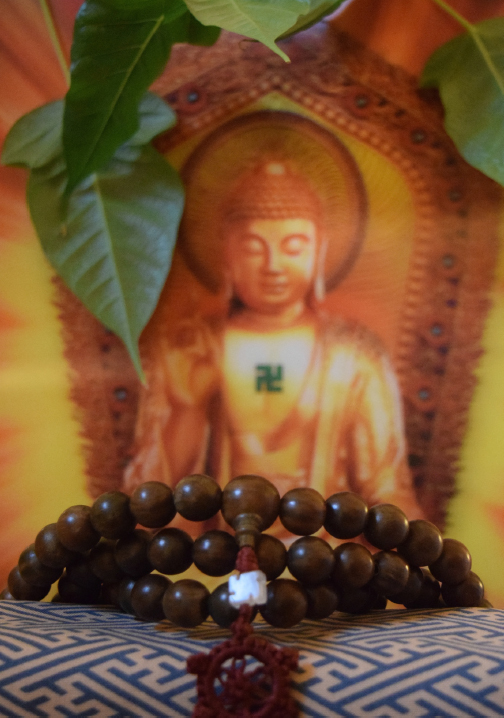
The Buddhist Swastika
and Hitlers Cross
Rescuing a Symbol of Peace
from the Forces of Hate
T. K. Nakagaki
Stone Bridge PressBerkeley, California
Published by
Stone Bridge Press
P. O. Box 8208, Berkeley, CA 94707
Text 2018, 2017 Toshikazu Kenjitsu Nakagaki.
This is a redesigned edition of a work privately published in 2017 under the same title.
Front cover design by Linda Ronan incorporating an enhancement of a photograph by Austin Davis Holiday.
All rights reserved.
No part of this book may be reproduced in any form without permission from the publisher.
Printed in the United States of America.
10 9 8 7 6 5 4 3 2 1 2023 2022 2021 2020 2019 2018
p- ISBN : 978-1-61172-045-7
e- ISBN : 978-1-61172-933-7
To all those who lost their precious lives
by war and violence in the world
Acknowledgments
The year 2011, when I started my research for this book, was an unforgettable year for me and for many around the globe. The Japanese earthquake and tsunami took away at least 19,000 lives and destroyed the Fukushima Dai-Ichi nuclear complex creating enormous radiation contamination in Japan, causing more suffering. Meanwhile on the other side of the earth, the tenth anniversary of another tragedy, the 9/11 terrorist attack, was commemorated.
The same year also marked the 2,600th anniversary of the Buddhas birthday. It was also the 750th memorial year of the death of Shinran Shonin, the founder of my lineage, Jodoshinshu (True Pure Land) Buddhism, and the 800th memorial year for Honen Shonin, the teacher of Shinran and founder of Jodo (Pure Land) Buddhism.
In 2011, I visited for the first time the Auschwitz and Treblinka death camps in Poland. I felt much sadness during these visits, but I was so grateful to have an opportunity to pay my respects to the victims of the Holocaust, or Shoah.
I would like to dedicate this book to mark all of the above happenings of 2011 and all the lives that were lost by these tragic events.
From mid-2016, with the beginning of the Trump presidential campaign, hate crimes have increased and the swastika symbols is being used more and more as a hate symbol and as a symbol by neo-Nazi groups. It is always sad for me to see people using this sacred symbol for hate crimes. This continued to increase in 2017 after Donald Trump became the US president.
This book could not have been completed without the support and encouragement of many individuals. I would like to express my deep appreciation to the following:
First, I would like to thank Mr. Peter Goodman of Stone Bridge Press for his support in the publication of this book. As this work grew out of my doctoral dissertation for New York Theological Seminary, I want to express my gratitude to my NYTS advisors: Dr. Dale Irvin, Dr. Wanda Lundy, and Dr. Jerry Reisig, and to my site team members: Dr. Karim Abdul-Matin, Rabbi Jo David, Greta Elbogen, Naresh Jain, Dr. M. G. Prasad, and Dr. Matt Weiner. I feel fortunate to have such individuals who gave me detailed advice for my book: Philip Getz, Dr. Leo Lefebure, Dr. Aimee Light, Dr. Jennifer Peace, and Dr. Madhuri M. Yadlapati. I appreciate my wonderful friends and colleague who sent blurbs for this book (listed here in alphabetical order): Rande Brown, Ambassador Anwarul Chowdhury, Dr. Dale Irvin, Dr. Leo Lefebure, Dr. George Packard, Rabbi Michael Schudrich, and Dr. Robert Thurman. My special thanks go to my wife, Heather Harlan Nakagaki, for her constant support and encouragement and for the many hours she patiently spent helping me with revisions.
I would like to share poetry and words that have inspired and guided me throughout my work on this subject. The following is a quote from Holocaust survivor Greta Elbogens poem, Remember Me!
Not In My Dictionary
In my dictionary the word
Disgusting
Is replaced with
The unique nature of things.
The word
Hate
Is replaced with
Inquiry into the unfamiliar.
Instead of
Revenge
Is stated
Dialogue with the one who hurt me.
In place of the word
War
Is written,
Building bridges of understanding
Between myself and the other.
I was further encouraged by these words from the Hasidic Jewish master, Rebbe Nachman of Breslow (17721810):
Know! A person walks in life on a very narrow bridge. The most important thing is not to be afraid.
The highest peace is the peace between opposites. If you remember this the next time you meet someone who makes you uncomfortable, instead of heading for the nearest exit, youll find ways for the two of you to get along.
To be a person of truth, be swayed neither by approval nor disapproval. Work at not needing approval from anyone and you will be free to be who you really are.
Develop a good eye. Always looking for good will bring you to truth.
Truth is the light by which to find your way out of darkness. Turn it on.
If you believe that you can damage, then believe that you can fix. If you believe that you can harm, then believe that you can heal.
Thank you, and may all living beings be happy, well, and peaceful. May we all be free from the attachment of greed, anger, and ignorance. May we all attain enlightenment.
T. K. Nakagaki
PREFACE
Western vs. Eastern Perceptions of the Swastika
More than eleven million men, women, and children were murdered during the Holocaust between 1933 and 1945 by Hitlers Nazi regime. This number includes approximately six million Jewstwo thirds of all Jews in Europe at the time. Five million human beings from other groups, including Gypsies, Russian prisoners of war, the handicapped, Hitlers political and religious opponents, Jehovahs Witnesses, blacks, and homosexuals were also killed. This genocide was carried out under the Nazi flag, which featured a symbol that is known in the West as the swastika, forever associating that symbol in Western eyes with evil, death, and destruction.
Next page
